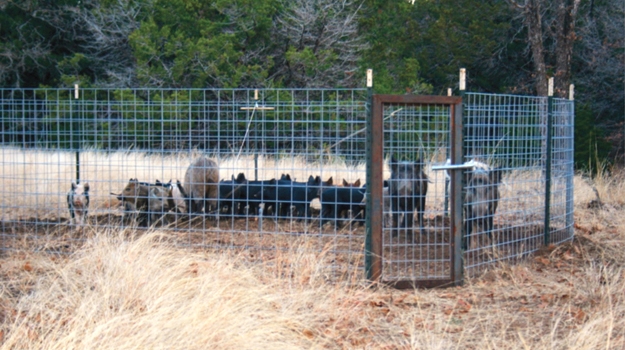
When it comes to the wild hog, land managers and farmers already know the massive problems created by this creature. Not only does the wild hog destroy good land and make it almost impossible for the farmer to recreate, but they also are able to avoid humans because of the fact that they will literally walk away from bait. With keen eyesight, a keen sense of smell and a survival rate that makes the wild hog numbers almost four million in the U.S., this is one creature that is extremely hard to trap.
What some call skill, others call an art form. Because of the fact that wild hogs are adaptable to almost any climate and can live a day’s walk away from a water source, the odds of the wild hog winning the battle are high. Without being disturbed in the slightest, the wild hog causes the individual as well as the government a great deal of time and money trying to figure out how to control their population.
Most hog management strategies are focused on harvesting the mature boar, trying to stop the quick reproduction rate that enables a sow to produce approximately 1,000 progeny during her lifetime. Although blind hunting, night hunting and hunting with dogs are all used for control, the numbers continue to increase.
When it comes to the hog trap, there are a variety of commercially built and handmade hog traps available. Some are no larger than a raccoon trap, whereas others are so large it takes a tractor to move them around a property. The number of gates and trigger mechanisms are also huge but, in the end, a successful hog trap begins at the top.
An open-topped trap is a good thing when there are a great deal of deer in the area. The open top ensures that other species cannot enter and get caught. In addition, do not put a bottom on the trap. The wild hog is skilled and will immediately recognize the fact that the floor is unnatural, alerting his senses to stay away.
Strength is also a key. Wild hogs are large creatures and will use their brute strength to survive, so make sure the hog trap is extremely durable.
A good hog trap should be made so that one or two people are all that’s required to move it. This provides an easy way to relocate the trap around the property.
The gate or trigger mechanism must be right for the trap. A wild hog has intelligence, and if they walk into a trap and the trigger mechanism fails, the job is not only a bust but the creature learns about the existence of the trap and avoids it in the future.
Although you want the trap to be easily managed, you also want the trap to be large enough to catch a number of hogs at one time. This is the only way to get the population under control; trapping one is not effective.
A wild hog will enter the trap and forage, activating the trigger and pulley system swinging the door shut. Checking on the trap and all of its components on a daily basis is a good thing, just to make sure that no crow, raccoon, etc. has come in to take the bait and caused the trap to close.
Look for the signs. Place traps in a shaded area. It is a fact that the wild hog uses drainages and water holes for survival, so keep this in mind when setting traps. Also look for territory markings, which is when a boar scars the ground with his front feet and expels a foul smell from a gland under its belly. Beds are also easy to spot. Boars will sometimes make a large bed by biting off grass and twigs and producing a pile. All of these factors are necessary to take into account before placing the trap.
There is no single tool that will bring this population down but by placing several traps in an area, and encouraging neighbors to do the same, you will begin to see a much lower number.



























